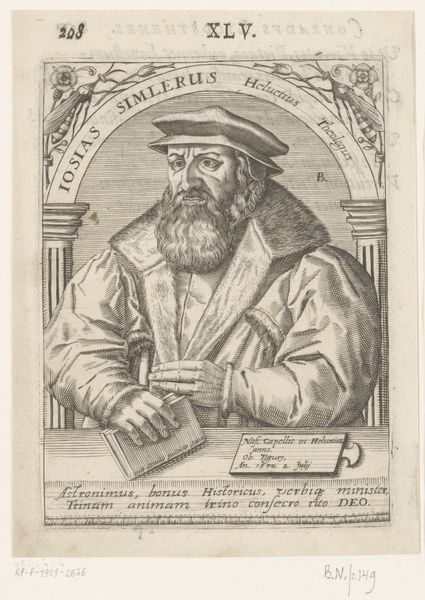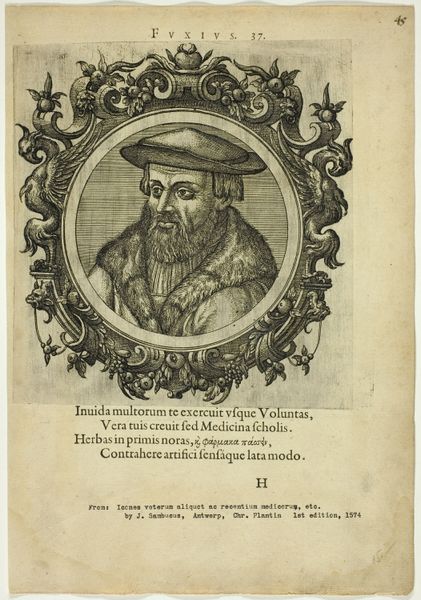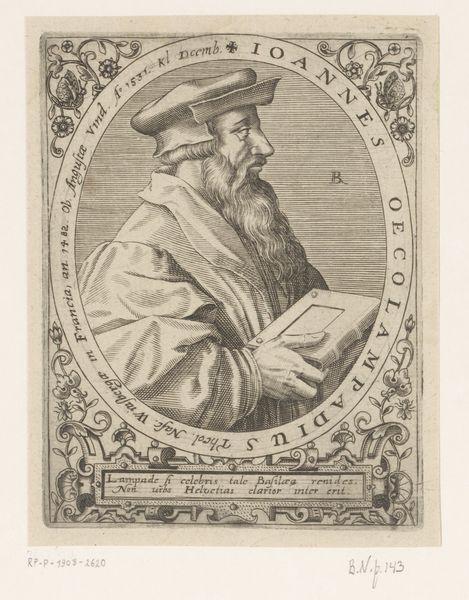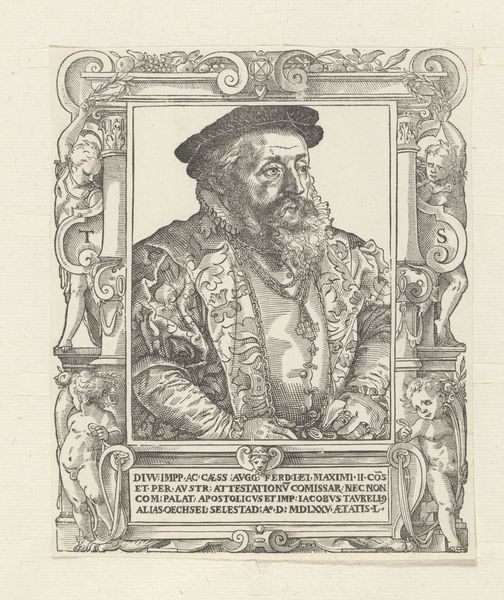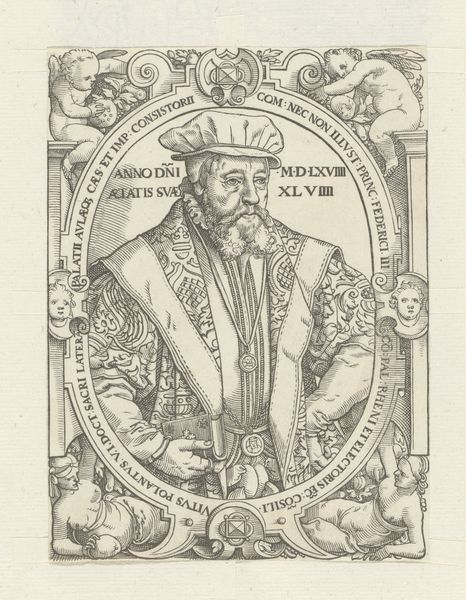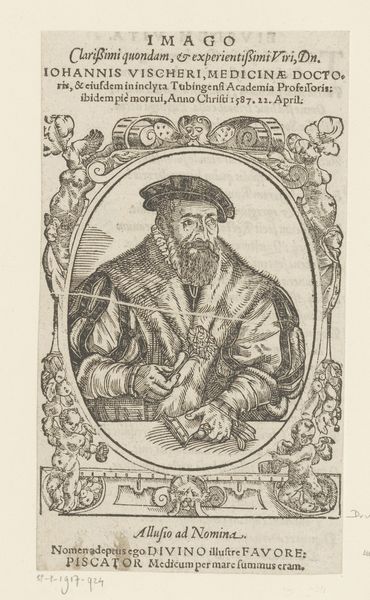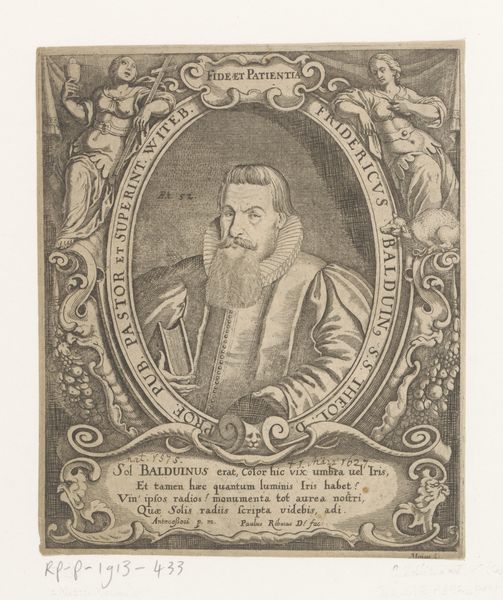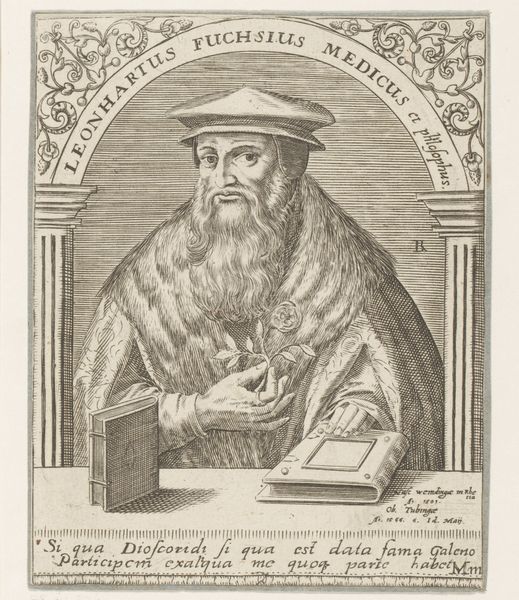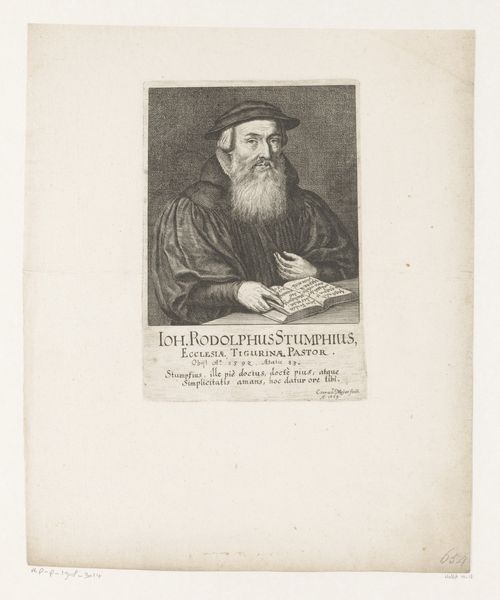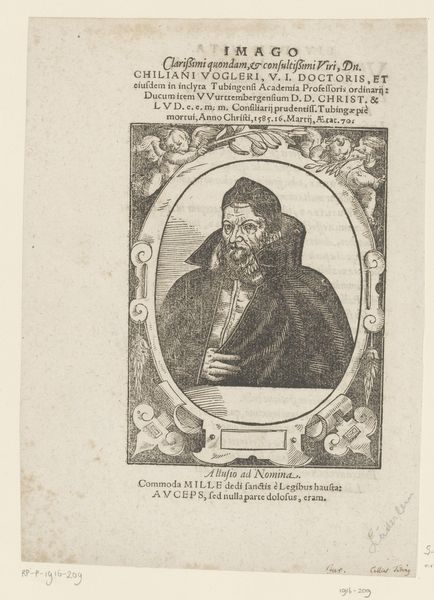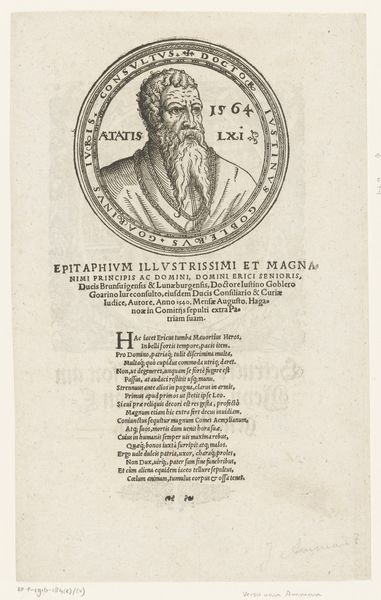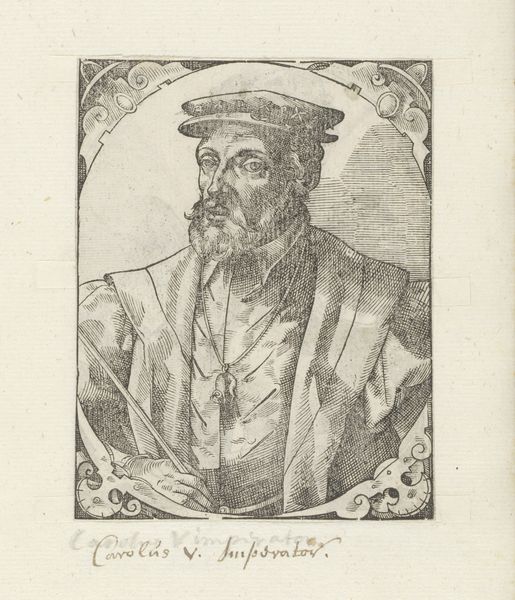
print, engraving
#
portrait
# print
#
pencil sketch
#
old engraving style
#
figuration
#
northern-renaissance
#
academic-art
#
engraving
Dimensions: height 137 mm, width 103 mm
Copyright: Rijks Museum: Open Domain
Curator: Before us, we have Jakob Lederlein's "Portret van Johannes Vischer," an engraving dating back to 1596. Editor: My first thought? What a meticulously rendered face! You can almost feel the texture of his beard. It's all these tiny, etched lines – labor intensive for sure. Curator: Absolutely. Vischer was a prominent philosopher and physician, a professor at the University of Tübingen. Prints like these were vital for circulating his image and, by extension, his intellectual authority within academic circles. It reflects a desire to cement one’s status within society. Editor: And consider the print itself as object, as labor! Imagine the skilled craftsman, hunched over a metal plate, meticulously carving each line in reverse. The quality of the engraving speaks volumes to the value placed on disseminating this man's image and, indirectly, knowledge itself as a commodity. Curator: Precisely! Notice the elaborate border around the portrait—cherubs and other classical motifs, carefully framing the intellectual within established aesthetic traditions. It emphasizes his place in the broader historical and scholarly continuum. The surrounding Latin text serves the same purpose, adding to Vischer’s importance by celebrating him with words. Editor: But even that ornamental frame is material information – it takes away from the focus on the process of image making and focuses attention on the status and consumption tied into creating the work. There’s almost a push-and-pull between celebrating intellect and celebrating the work that it required to even produce the work, especially something made by hand as intricate and refined. Curator: I think there’s also something poignant in seeing this relatively simple image so carefully rendered – you get a sense for how this portrait became more accessible and ubiquitous through its creation and replication. Editor: Absolutely. Each print carried the potential for influence. Looking at it now, though, I'm drawn to thinking about how something handmade in the past takes on completely new implications today, given our new capacities with artificial intelligence and digital circulation.
Comments
No comments
Be the first to comment and join the conversation on the ultimate creative platform.
